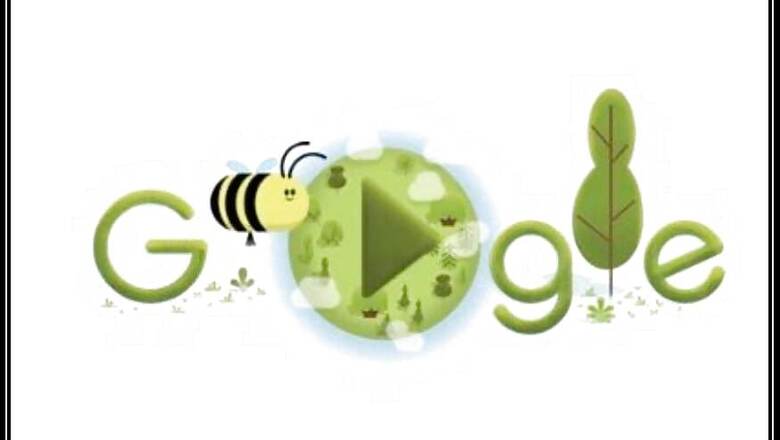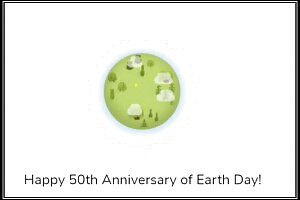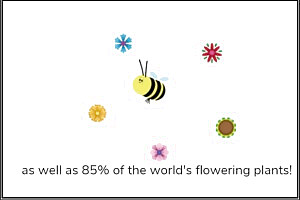
views
New Delhi: Marking an end from the series of Doodles thanking those engaged in essential services amid the coronavirus pandemic, Google today came out with its 'bee special' doodle on the occasion of the 50th Earth day.
The interactive and colourful Doodle has been made in collaboration with The Honeybee Conservancy based in New York. Google Doodle also tweeted about today's special entrée:
See what all the BUZZ ???? is about in this year’s interactive #GoogleDoodle celebrating #EarthDay! ????Guide your bee to pollinate flowers, while learning fun facts about our winged friends & our planet they help sustain ???? → https://t.co/cbeIpTweSr pic.twitter.com/HrgA7a9tKy— Google Doodles (@GoogleDoodles) April 22, 2020
It shows a beautiful yellow and black bee amid the green Google logo, with a play button for users to click and engage in a game wherein they "Guide their bee to pollinate flowers while learning fun facts about bees and our planet that they help to sustain."
Upon clicking on the Google Doodle, a string of flowers appear, followed by a green image of the Earth, and users are wished the 50th Anniversary of Earth Day.

"Today we celebrate our planet and its smallest and most critical organisms...the bee," reads the interactive logo, followed by facts about the creatures, aided by colourful animation.

The last part of the Doodle is a virtual game, where users can lead their own bee on a field of flowers. When they lead the bee to the flower and click on it, the flowers get pollinated. Random facts on bees also appear as people proceed through the game, serving an educative purpose.

The Founder and Executive Director Guillermo Fernandez of Honeybee Conservancy also shared his personal thoughts behind the Doodle and what people can do to help save bees while social distancing:
1. Support your local beekeeper. When purchasing honey and beeswax products, choose locally-made options to invest in local beekeepers, who sustainably raise bees and bolster the community.
2. Donate time or funds to local environmental groups. Bees are part of a complex ecosystem, and contributions to organizations that support any conservation effort will help strengthen the environment.
3. Make safe havens for native bees. Most native bees have a solitary lifestyle: 30% live in holes inside trees, and 70% live underground. Give them shelter by providing exposed, undisturbed soil or nesting boxes that you can buy or make yourself.
4. Create a bee bath. Fill a shallow bird bath or bowl with clean water, and arrange stones inside so that they poke out of the water. Bees will land on the stones to drink on breaks from foraging and pollinating.
5. Plant a pollinator garden. Diversify sources of bee nutrition while beautifying spaces with pollinator-friendly plants. Make a garden in spaces ranging from window boxes to full yards, and consider using a mix of multi-season blooms to provide year-round sustenance.
You can also read more about this Doodle, and the journey of the Honey Conservancy, here.




















Comments
0 comment